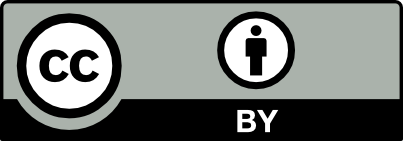Checking for non-preferred file/folder path names (may take a long time depending on the number of files/folders) ...
This resource contains some files/folders that have non-preferred characters in their name. Show non-conforming files/folders.
This resource contains content types with files that need to be updated to match with metadata changes. Show content type files that need updating.
Stream chemistry and hydrology data in the Augusta Creek catchment: a low-relief, wetland-rich catchment in Michigan
| Authors: |
|
|
|---|---|---|
| Owners: |
|
This resource does not have an owner who is an active HydroShare user. Contact CUAHSI (help@cuahsi.org) for information on this resource. |
| Type: | Resource | |
| Storage: | The size of this resource is 2.7 MB | |
| Created: | Feb 14, 2025 at 8:57 p.m. (UTC) | |
| Last updated: | Aug 03, 2025 at 9:20 a.m. (UTC) | |
| Published date: | Aug 03, 2025 at 9:20 a.m. (UTC) | |
| DOI: | 10.4211/hs.7b871f8ee0fa4e2ea2c9e37cbc55f022 | |
| Citation: | See how to cite this resource | |
| Content types: | Single File Content |
| Sharing Status: | Published |
|---|---|
| Views: | 1014 |
| Downloads: | 51 |
| +1 Votes: | Be the first one to this. |
| Comments: | No comments (yet) |
Abstract
Hydrology and chemistry data for a spatially distributed synoptic and discharge campaign in the Augusta Creek Catchment (located in southwestern Michigan). The spatially distributed chemistry data was collected every 2-3 weeks from October 2021 to June 2024, and includes dissolved organic carbon (DOC), nitrate, sulfate, and chloride. Within 24 hours of collection samples were filtered through 0.45µm cellulose acetate membrane filters. We measured DOC (as non-purgeable organic carbon - NPOC), using two total organic carbon analyzers with total nitrogen units (Shimadzu TOC-V CPH with a TNM-1 and autosampler ASI-V before March 9 2023 and Shimadzu TOC-L CPH/CPN with a TNM-L ROHS and autosampler ASI-L after March 9 2023). For our analysis, we only include DOC/NPOC data after March 9 2023, due to discrepancies between the two instruments used. We measured anions (Cl-, NO3-, SO42-) using an ion chromatography system (Thermo Fisher Dionex, ICS1100 and ICS1000 and AS-DV autosampler). Our method detection limits were: 0.02 mg L-1 for anions and 0.43 mg L-1 for NPOC. Values that are "BDL" were below instrument detection limit. For values below method or instrument detection limit, we assigned concentrations of half the limit of quantification for the purpose of calculations and analyses. If this data is used in the future, values below the method detection limit will need to be filtered appropriately. Values that are NA were not analyzed. We collected discharge data during a period of baseflow from August 13-14, 2024 using two Sontek Flowtracker2 Acoustic Doppler Velocimeters. Discharge values were calculated using the Flowtracker’s mid-section method, measuring depth and velocity at ~20 stations across the stream width. Uncertainty in discharge (%) was also calculated by the Flowtracker instrument. To calculate specific discharge , we normalized our measured discharge by contributing area for each flow location.
This data supports the paper:
Weidner, C. R., Zarnetske, J. P., Kendall, A. D., Martin, S. L., Nesheim, S., & Shogren, A. J. (2025). Wetlands, groundwater and seasonality influence the spatial distribution of stream chemistry in a low‐relief catchment. Journal of Geophysical Research: Biogeosciences, 130, e2025JG008989. https://doi.org/10.1029/2025JG008989
Abstract: Evaluating stream water chemistry patterns provides insight into catchment ecosystem and hydrologic processes. Spatially distributed patterns and controls of stream solutes are well‐established for high‐relief catchments where solute flow paths align with surface topography. However, the controls on solute patterns are poorly constrained for low‐relief catchments where hydrogeologic heterogeneities and river corridor features, like wetlands, may influence water and solute transport. Here, we provide a data set of solute patterns from 58 synoptic surveys across 28 sites and over 32 months in a low‐relief wetland‐rich catchment to determine the major surface and subsurface controls along with wetland influence across the catchment. In this low‐relief catchment, the expected wetland storage, processing, and transport of solutes is only apparent in solute patterns of the smallest subcatchments. Meanwhile, downstream seasonal and wetland influence on observed chemistry can be masked by large groundwater contributions to the main stream channel. These findings highlight the importance of incorporating variable groundwater contributions into catchment‐scale studies for low‐relief catchments, and that understanding the overall influence of wetlands on stream chemistry requires sampling across various spatial and temporal scales. Therefore, in low‐relief wetland‐rich catchments, given the mosaic of above and below ground controls on stream solutes, modeling efforts may need to include both surface and subsurface hydrological data and processes.
Subject Keywords
Coverage
Spatial
Temporal
| Start Date: | |
|---|---|
| End Date: |
Content
readme.md
README
DischargeSitesLabeled.jpg
Map of discharge sampling sites, made in ArcGIS pro
SynopticSitesLabeled.jpg
Map of spatially distributed synoptic sites where water chemistry samples were taken, made in ArcGIS pro
Augusta_Discharge_Data_Share.xlsx
Excel sheet containing discharge sampling data
Augusta_Synoptic_Data_Share
Excel sheet containing synoptic sampling water chemistry data, sampling collection information, and catchment land coverage percentages
Credits
Funding Agencies
This resource was created using funding from the following sources:
| Agency Name | Award Title | Award Number |
|---|---|---|
| National Science Foundation | Collaborative Research: Arctic Stream Networks as Nutrient Sensors in Permafrost Ecosystems | OPP-1916567 |
| National Science Foundation | Graduate Research Fellowship Program (GRFP) | DGE-1848739 |
| National Science Foundation | CAREER: Towards Forecasting Watershed Organic Carbon Fluxes across Flow Regimes and Ecoregions | EAR-1846855 |
How to Cite
This resource is shared under the Creative Commons Attribution CC BY.
http://creativecommons.org/licenses/by/4.0/

Comments
There are currently no comments
New Comment